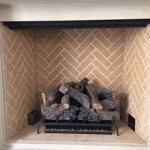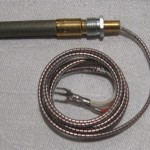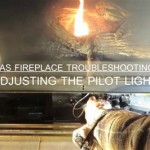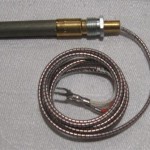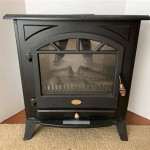Fireplace Design Ideas: A Comprehensive Guide
The fireplace, historically a necessity for warmth and cooking, has evolved into a central design element in modern homes. It serves as a focal point, adding character, ambiance, and value to any living space. Selecting the right fireplace design requires careful consideration of architectural style, material choice, spatial constraints, and functional needs. This article explores various fireplace design ideas, focusing on key elements that contribute to a successful and aesthetically pleasing installation.
When embarking on a fireplace design project, the initial step involves evaluating the existing architectural context. The fireplace should complement, not clash with, the overall style of the home. In traditional settings, classic designs with intricate detailing and natural stone or brick are often preferred. Contemporary homes, on the other hand, lend themselves well to minimalist designs with sleek lines, modern materials, and a focus on functionality. A mismatch between the fireplace design and the architectural style can result in a visually jarring element that detracts from the overall aesthetic.
Beyond aesthetics, functionality plays a crucial role in fireplace design. The size of the room, the intended use of the fireplace (primarily for ambiance or as a supplemental heating source), and local building codes all influence the design choices. A large, inefficient fireplace in a small room can overwhelm the space and lead to uncomfortable temperature fluctuations. Conversely, a small, underpowered fireplace in a large room may fail to provide adequate warmth. Therefore, a thorough assessment of the room's dimensions and heating requirements is essential before finalizing the design.
Material Selection: Balancing Aesthetics and Functionality
The selection of materials for the fireplace surround and hearth is a critical aspect of the design process. The materials contribute significantly to the overall aesthetic and impact the durability and maintenance requirements of the fireplace. Common material choices include natural stone, brick, wood, concrete, and metal, each offering distinct advantages and disadvantages.
Natural stone, such as granite, marble, and limestone, provides a timeless and elegant look. It is durable, heat-resistant, and available in a wide range of colors and textures. Stone fireplaces often evoke a sense of history and tradition, making them suitable for classic and rustic home styles. However, natural stone can be relatively expensive and requires professional installation. Furthermore, certain types of stone are porous and may require sealing to prevent staining.
Brick, another popular choice, offers a more rustic and informal aesthetic. It is relatively affordable and provides excellent heat retention. Brick fireplaces can be painted or stained to match the room's décor, offering versatility in design. However, brick can be prone to cracking over time, particularly if exposed to extreme temperature fluctuations. Regular maintenance, including cleaning and repointing, is necessary to ensure its longevity.
Wood, while offering a warm and inviting appearance, requires careful consideration due to its flammability. Wood is typically used as an accent material for the mantel and surround, rather than for the firebox itself. It is crucial to ensure that any wood used in the fireplace design is properly treated and installed at a safe distance from the firebox to prevent fire hazards. Wood fireplaces often complement traditional and farmhouse-style homes.
Concrete, a versatile and modern material, allows for a wide range of design possibilities. It can be cast into various shapes and textures, offering a contemporary and minimalist aesthetic. Concrete fireplaces are often used in modern and industrial-style homes. However, concrete can be prone to cracking and requires sealing to prevent staining. It also tends to be heavy, requiring careful structural planning.
Metal, such as steel and wrought iron, offers a sleek and industrial aesthetic. Metal fireplaces are often used in modern and contemporary homes. They are durable and heat-resistant but can be prone to rusting if not properly treated. Metal fireplaces can be combined with other materials, such as glass and stone, to create unique and visually striking designs.
Fireplace Design Styles: Exploring Different Aesthetic Approaches
The fireplace design style should align with the overall décor of the home. Numerous design styles cater to different aesthetic preferences, ranging from traditional and rustic to modern and minimalist. Understanding these styles can help homeowners choose a design that complements their existing interior décor.
Traditional fireplaces typically feature ornate detailing, such as intricate moldings, carved mantels, and decorative tilework. They often incorporate natural stone or brick and are designed to evoke a sense of history and elegance. Traditional fireplaces are well-suited for classic and formal living spaces.
Rustic fireplaces emphasize natural materials and textures, creating a warm and inviting atmosphere. They often incorporate rough-hewn stone, reclaimed wood, and earthy tones. Rustic fireplaces are ideal for cabins, farmhouses, and homes with a relaxed and informal décor.
Modern fireplaces prioritize clean lines, minimalist design, and a focus on functionality. They often incorporate concrete, metal, and glass, creating a sleek and contemporary aesthetic. Modern fireplaces are well-suited for minimalist homes and urban living spaces.
Contemporary fireplaces blend elements of traditional and modern design, creating a balanced and versatile aesthetic. They may feature clean lines but incorporate natural materials or incorporate ornate detailing in a subtle way. Contemporary fireplaces are suitable for a wide range of interior styles.
Transitional fireplaces represent a harmonious blend of traditional and modern elements. Often featuring a neutral color palette, they incorporate classic architectural details alongside clean, contemporary lines. This design style offers a timeless appeal that can adapt to evolving tastes.
Enhancing the Fireplace Experience: Features and Accessories
Beyond the basic structure of the fireplace, various features and accessories can enhance the overall experience and functionality. These include fireplace inserts, gas logs, mantels, shelving, and decorative accents. Thoughtful selection of these elements can transform a simple fireplace into a captivating focal point.
Fireplace inserts are self-contained heating units that are installed inside an existing fireplace opening. They are available in wood-burning, gas, and electric models, offering improved efficiency and control over heat output. Fireplace inserts can significantly reduce heat loss and improve the overall heating performance of the fireplace.
Gas logs provide the aesthetic appeal of a wood-burning fireplace without the mess and maintenance. They are made from ceramic or refractory materials and are designed to mimic the appearance of natural wood logs. Gas logs are a convenient and efficient alternative to traditional wood-burning fireplaces.
Mantels serve as a decorative shelf above the fireplace opening. They can be made from various materials, including wood, stone, and metal, and can be customized to match the fireplace design. Mantels provide a focal point for displaying artwork, photographs, and other decorative items.
Shelving units flanking the fireplace can provide additional storage and display space. They can be built-in or freestanding and can be customized to match the fireplace design. Shelving units are a functional and aesthetic addition to any fireplace setting.
Decorative accents, such as fire screens, toolsets, and artwork, can further enhance the fireplace experience. These elements add personality and character to the fireplace setting, creating a warm and inviting atmosphere. Selecting decorative accents that complement the fireplace design and the overall décor of the home is crucial.
Incorporating ambient lighting around the fireplace can dramatically enhance the ambiance. Options include recessed lighting, sconces, and accent lamps, each contributing to a warm and inviting atmosphere. Dimmable lighting allows for adjusting the brightness to suit different moods and occasions, further enhancing the fireplace experience.
Ultimately, the ideal fireplace design is one that seamlessly blends aesthetics, functionality, and personal preferences. By carefully considering these elements, homeowners can create a fireplace that serves as a cherished focal point for years to come.

36 Fireplace Decor Ideas Modern Mantel

40 Fabulous Fireplace Design Ideas For Any Budget Or Style

40 Best Fireplace Décor Ideas Mantel

36 Fireplace Decor Ideas Modern Mantel

Best Fireplace Decor Ideas For Your Home Family Handyman

Fireplace Design Ideas Materials Colors Styles In 2024 Bodaq

40 Best Fireplace Décor Ideas Mantel

New This Week 9 Fantastic Fireplace Design Ideas

10 Fireplace Mantel Decorating Ideas Full Service Chimney

Unveiling The 63 Best Modern Fireplace Design Ideas Living Room With
Related Posts

